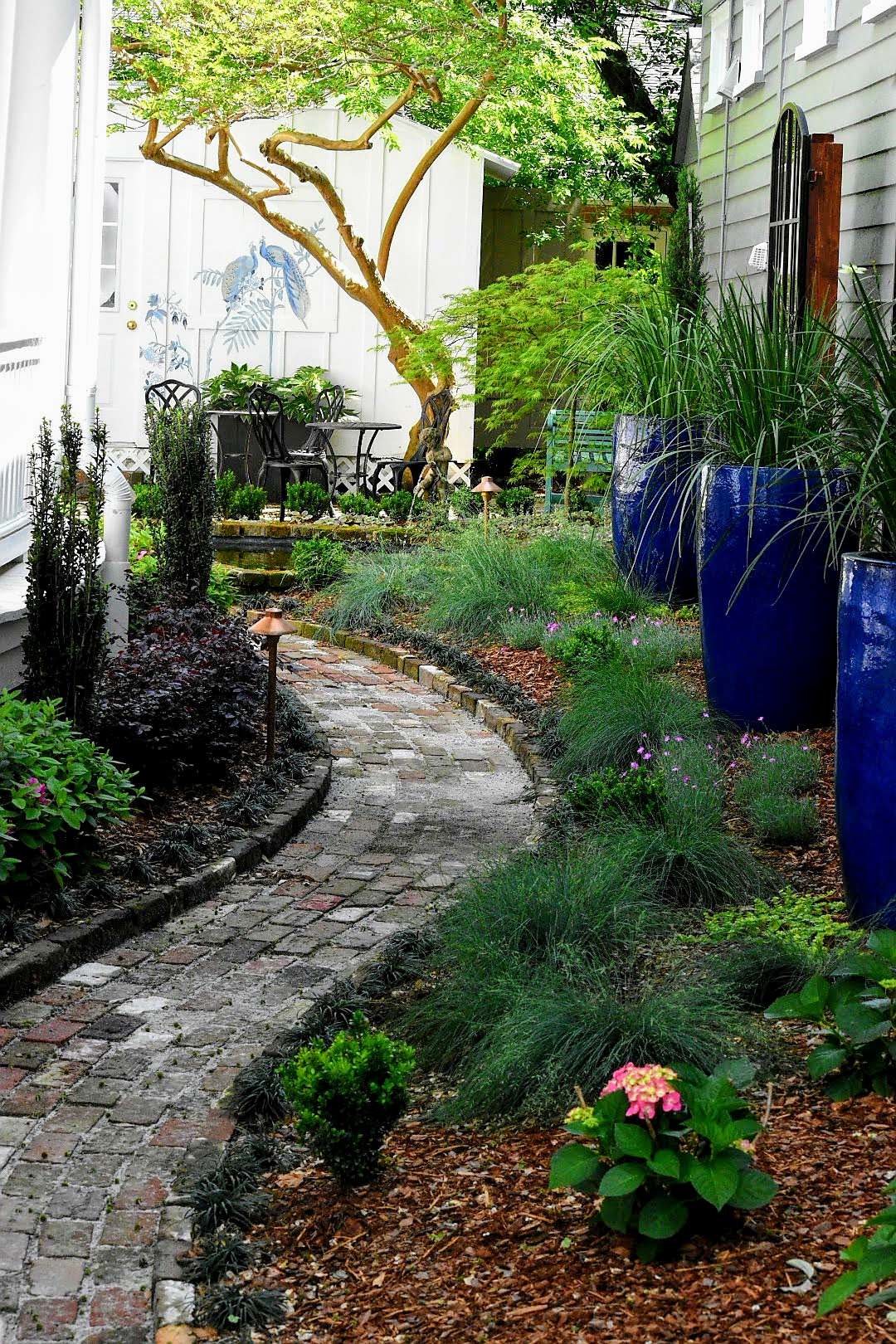The Duty of Yard Layout in Supporting Sustainability and Biodiversity
Garden design is significantly recognized for its potential to foster sustainability and boost biodiversity within metropolitan and country landscapes. By focusing on native plant types and employing water preservation techniques, designers can produce atmospheres that not just grow but also need minimal chemical treatment.
Value of Native Plants
Emphasizing using native plants in garden layout is vital for promoting environmental equilibrium and sustainability. Indigenous plants are those that normally take place in a certain area and have adjusted to the local climate, soil, and wildlife. Their incorporation right into gardens sustains local environments by supplying habitats and food sources for native pollinators, birds, and other wild animals.

Water Conservation Techniques

Additionally, executing rainfall gardens can catch and filter stormwater runoff, promoting groundwater recharge while decreasing disintegration - landscape design near Summerville South Carolina. These gardens utilize native plants that grow in damp conditions, properly managing excess water while developing varied environments
Furthermore, using mulch in garden beds aids retain dirt wetness, decreasing dissipation and the frequency of watering (Landscape Designer). Organic composts, such as wood chips or straw, additionally improve soil health over time
An additional effective strategy is the use of permeable paving products in pathways and patio areas, enabling rainwater to infiltrate the ground instead than running. This promotes wetness retention and lowers the need for irrigation.
Lastly, mounting a rainwater harvesting system can dramatically add to water preservation initiatives. Gathering and keeping rain for yard usage motivates sustainable practices and lowers reliance on metropolitan water resources. By incorporating these strategies, yard styles can properly advertise water conservation while sustaining environmental health and wellness.
Minimizing Chemical Use
While several gardeners look for vivid and healthy and balanced plants, minimizing chemical usage is important for fostering a lasting ecological community. The reliance on synthetic plant foods and pesticides can cause soil destruction, water contamination, and a decline in valuable insect populaces. By taking on natural horticulture methods, garden enthusiasts can boost the wellness of their landscapes while promoting biodiversity.
One effective approach is to utilize garden compost and natural amendments, which improve the dirt normally and improve its structure. These practices not just enhance plant health and wellness yet additionally decrease the requirement for chemical fertilizers. Executing integrated insect management (IPM) methods additionally minimizes chemical inputs by urging natural predators, such as ladybugs and parasitical wasps, to manage pest populations.

Producing Wild Animals Environments
Producing vibrant wild animals habitats within yards not only improves biodiversity yet likewise complements sustainable horticulture methods targeted at reducing chemical usage. By integrating native plants, garden enthusiasts can provide essential resources such as food and sanctuary for numerous types, including birds, pests, and small mammals. Indigenous plants are well-adapted to local conditions, calling for less water and less chemical inputs, therefore aligning with sustainability goals.
The style of these habitats can consist of diverse layers of see this greenery, such as trees, bushes, and ground cover, which increases structural intricacy and uses diverse specific niches for wildlife (landscape design near Summerville South Carolina). Furthermore, functions like water resources, such as tiny ponds or birdbaths, can draw in and sustain a broader series of types
Keeping a naturalistic method, which might include leaving some locations wild or uninterrupted, permits for the natural procedures of communities to prosper. This practice encourages the existence of helpful insects and pollinators, which play a critical duty in the health and wellness of both gardens and bordering atmospheres. In general, creating wildlife habitats is an essential aspect of sustainable garden layout, fostering ecological equilibrium and resilience while boosting the elegance and performance of exterior spaces.
Community Interaction in Gardening
Community interaction in horticulture promotes a feeling of belonging and cumulative duty, transforming individual gardening initiatives right into common campaigns that profit the entire neighborhood. By involving community participants in gardening projects, we can grow not only plants however likewise relationships and social networks. Local gardens work as crucial areas for education, where people of all ages can discover sustainable methods, biodiversity, and environmental stewardship.
Collaborative gardening efforts, such as neighborhood yards, promote the exchange of knowledge and resources, ensuring that all participants can add and benefit. This inclusivity improves area durability, as participants collaborate to conquer difficulties such as food insecurity and ecological destruction. Furthermore, neighborhood gardens can offer as systems for social expression, permitting individuals to share their heritage through varied planting and gardening strategies.
In addition, engaging the community in horticulture initiatives can cause raised awareness of neighborhood communities and the significance of biodiversity. By functioning jointly to style and preserve these spaces, citizens cultivate a shared commitment to sustainability, developing an enduring influence on both the setting and community communication. Ultimately, area engagement in horticulture is an effective device for advertising ecological stewardship and boosting the lifestyle within areas.
Verdict
Finally, tactical yard style substantially contributes to sustainability and biodiversity (Landscape Designer). By emphasizing using native plants, executing water preservation strategies, and minimizing chemical inputs, gardens can successfully support neighborhood ecological communities. Additionally, the creation of wild animals environments and promoting neighborhood involvement even more enhance ecological stewardship. Collectively, these techniques not just enhance the appeal of rooms but additionally advertise eco-friendly equilibrium, making garden design an essential component in the quest of a sustainable future.